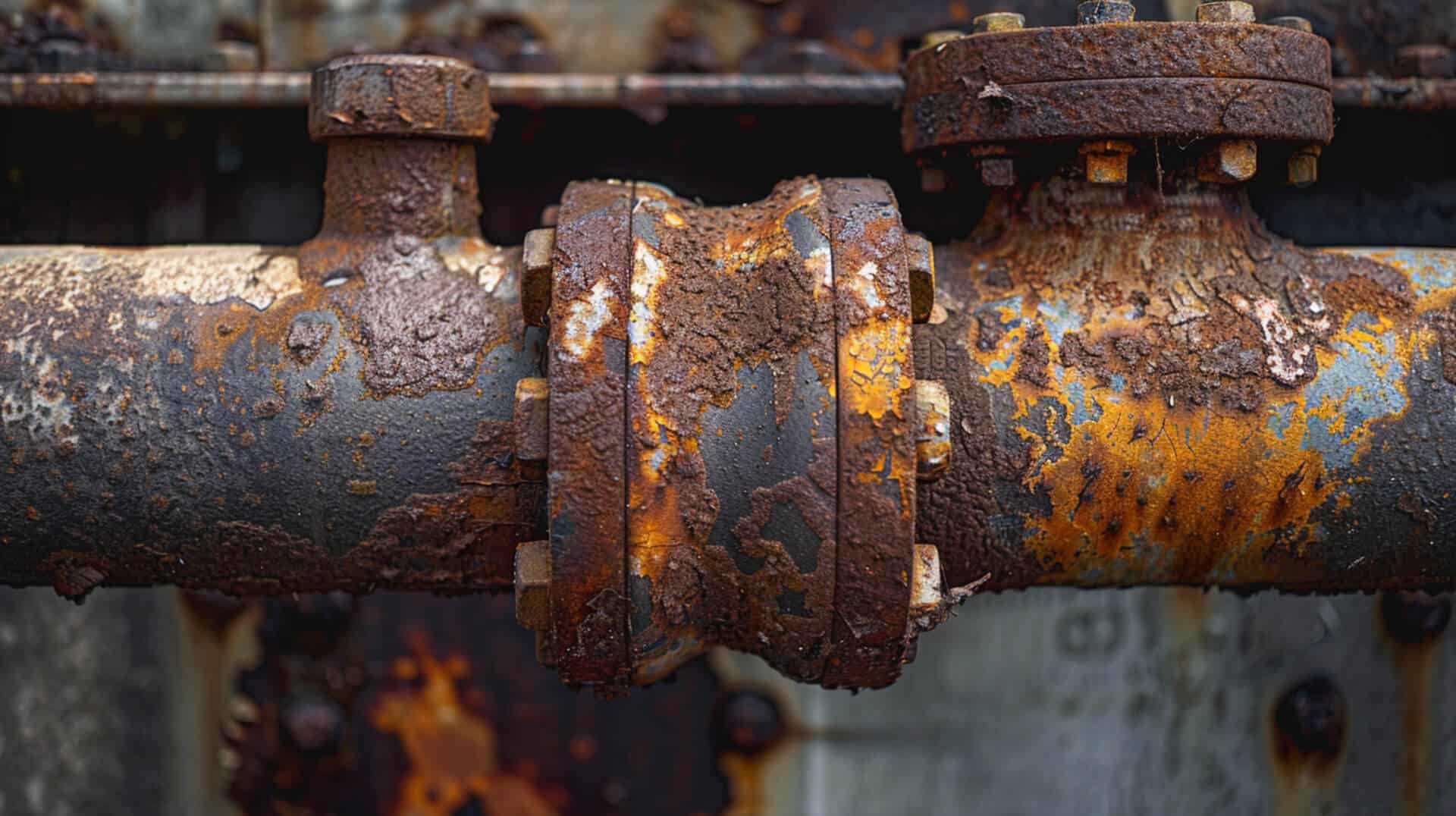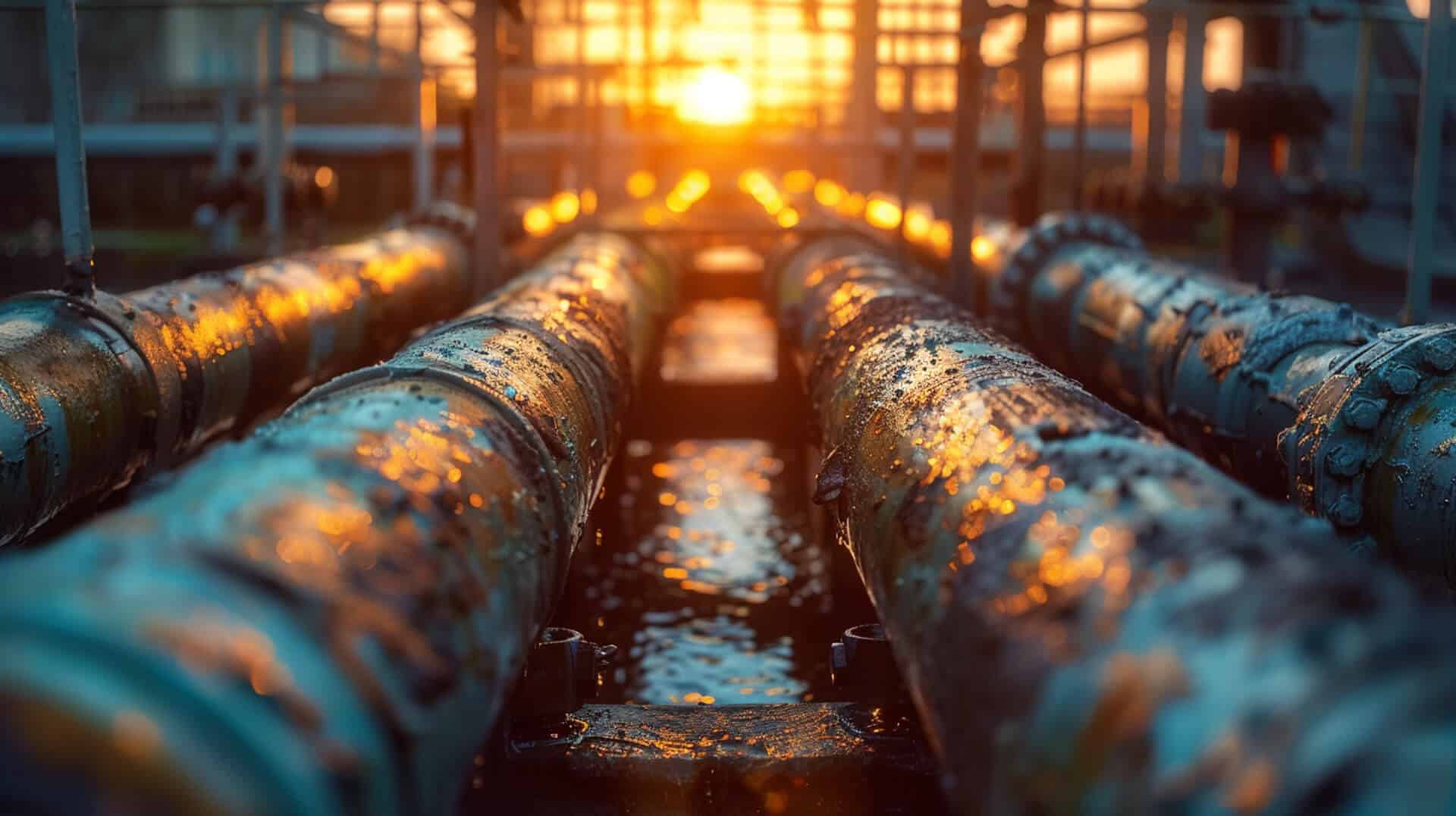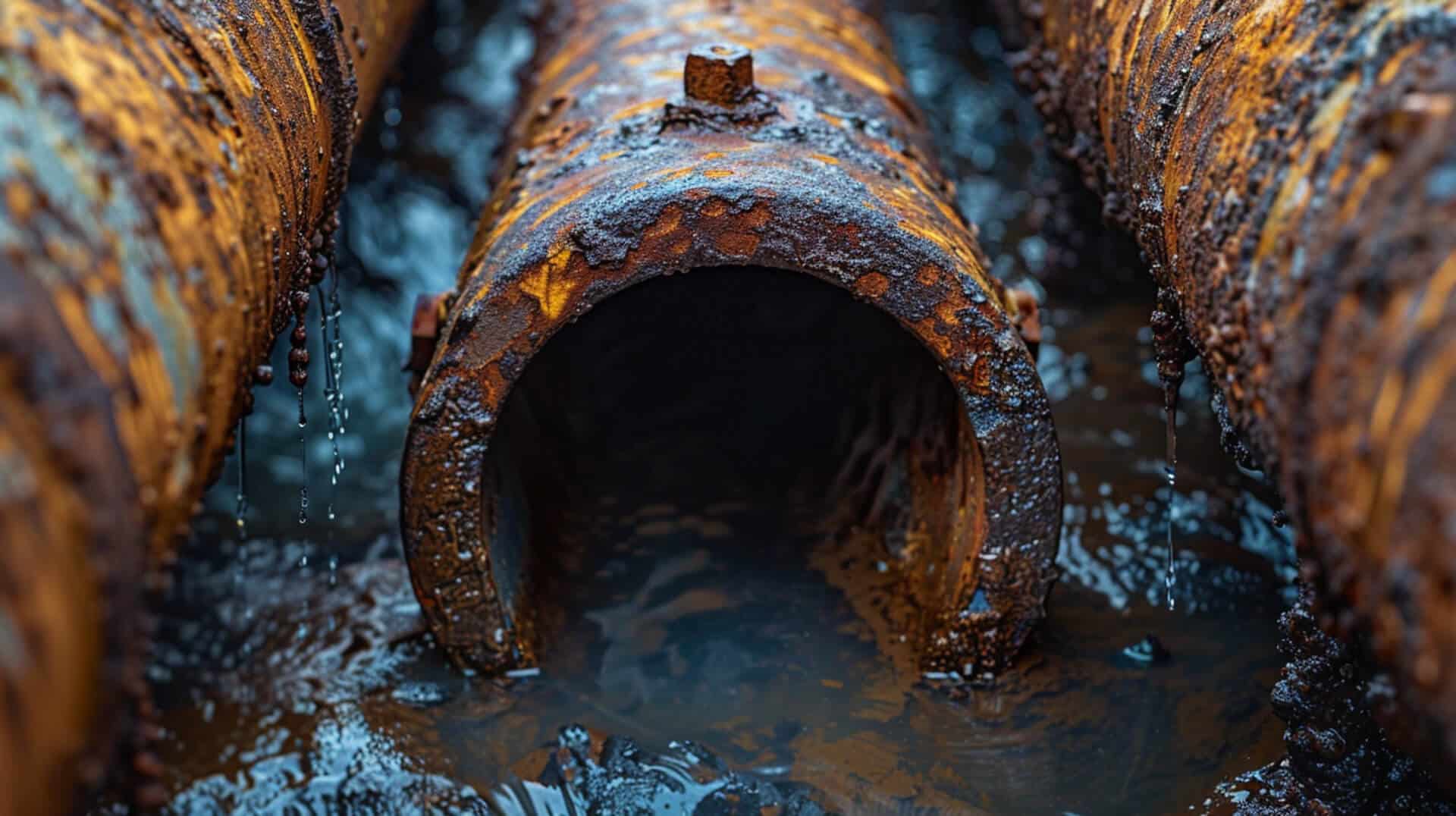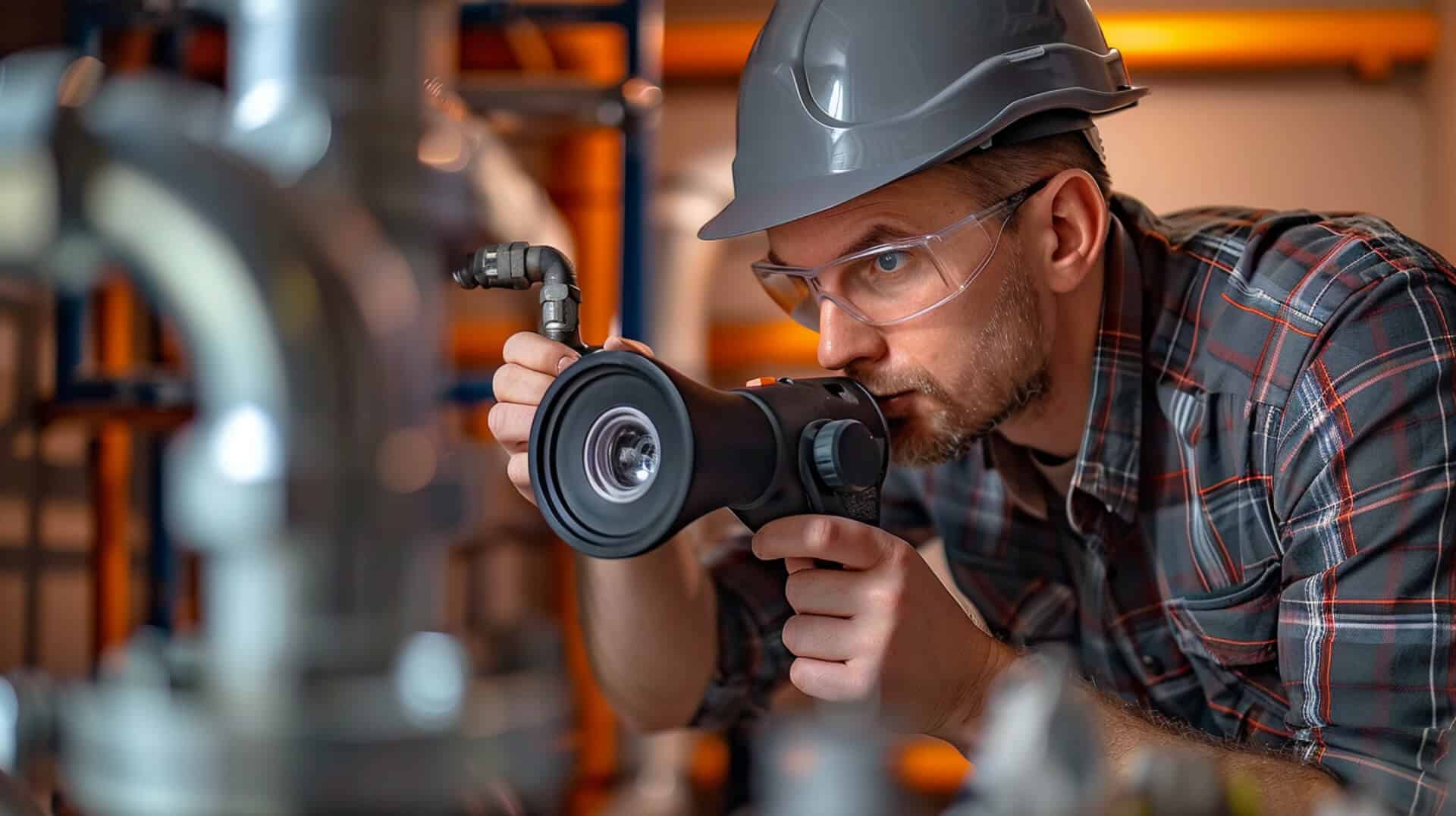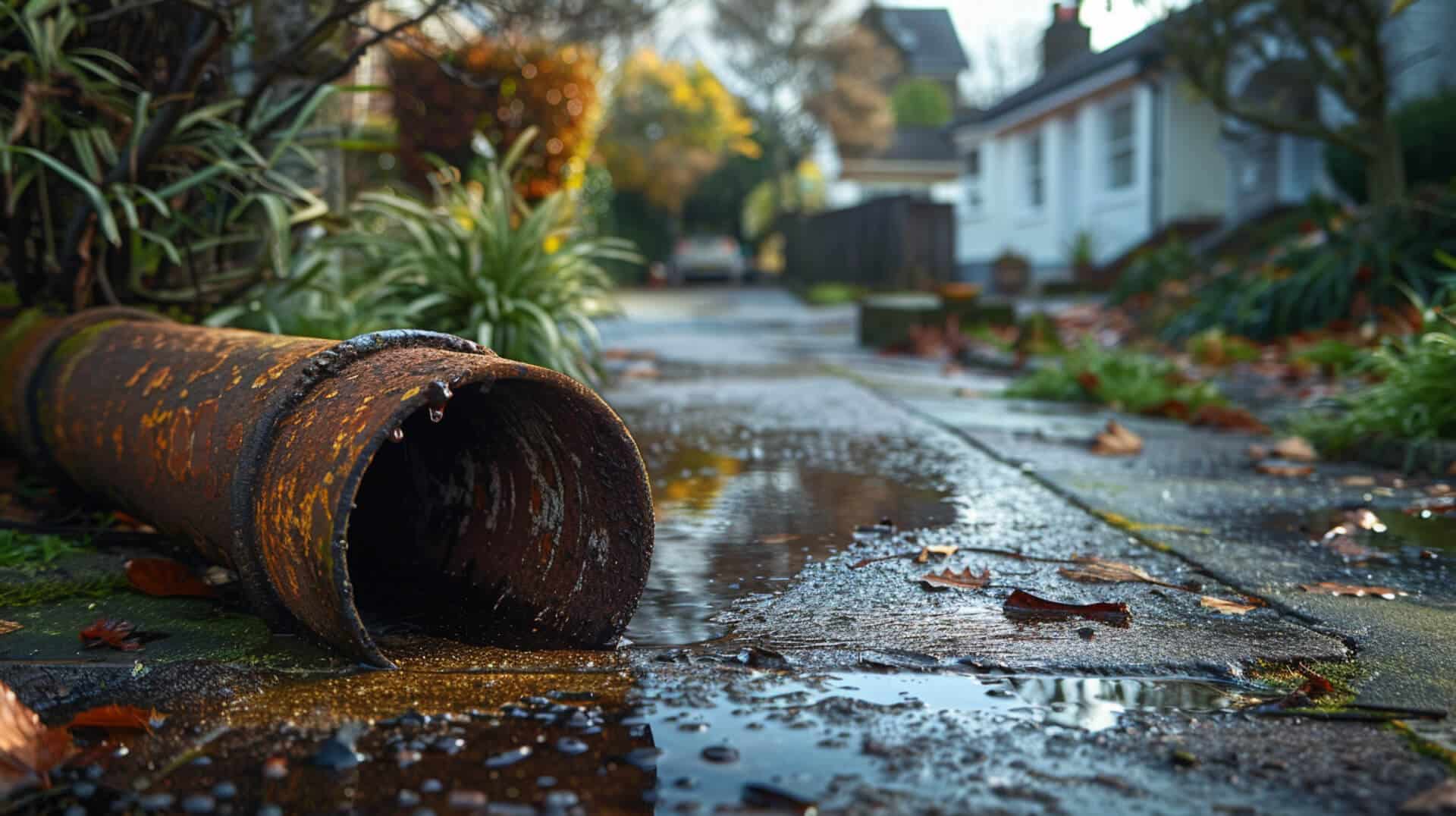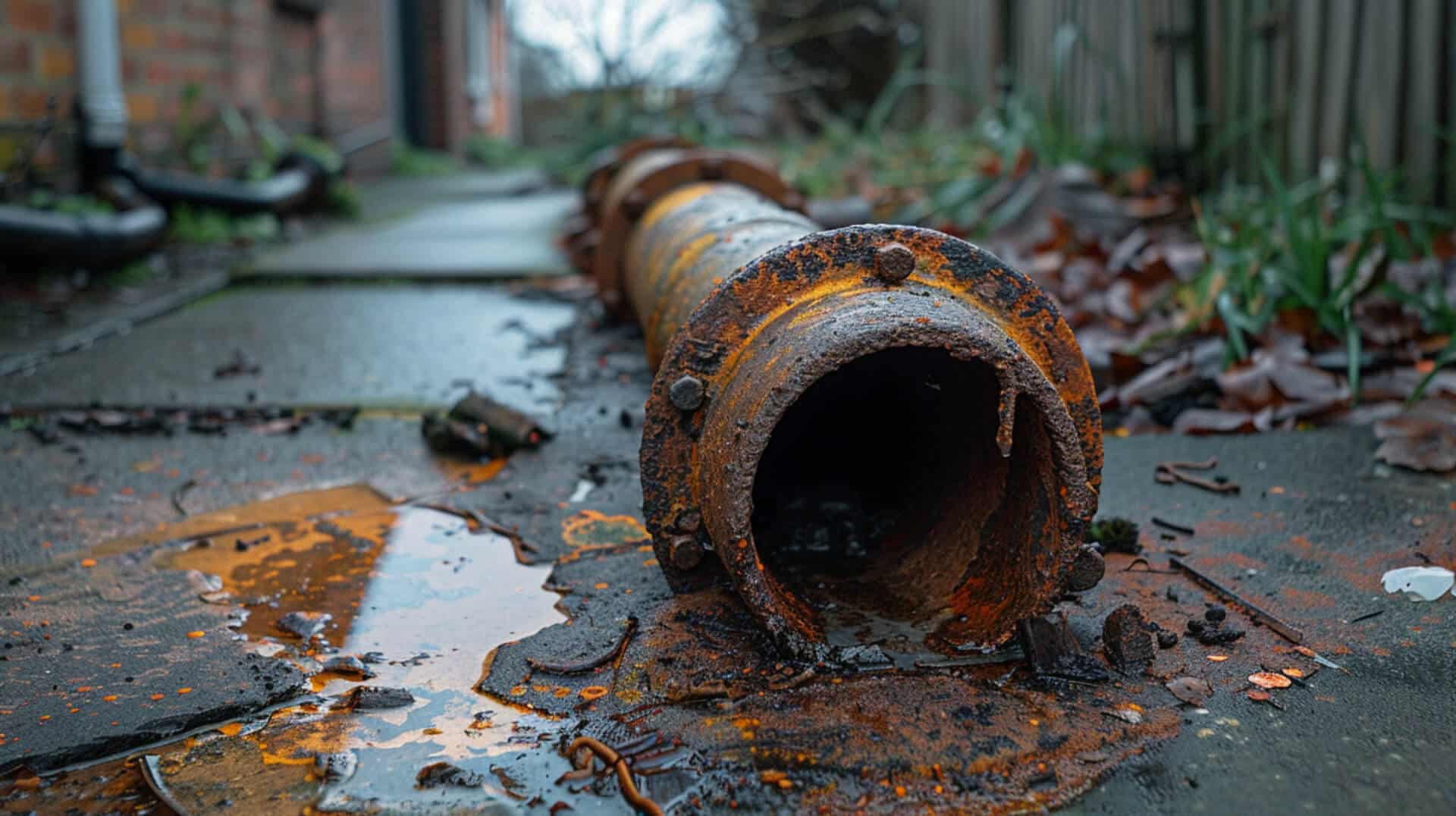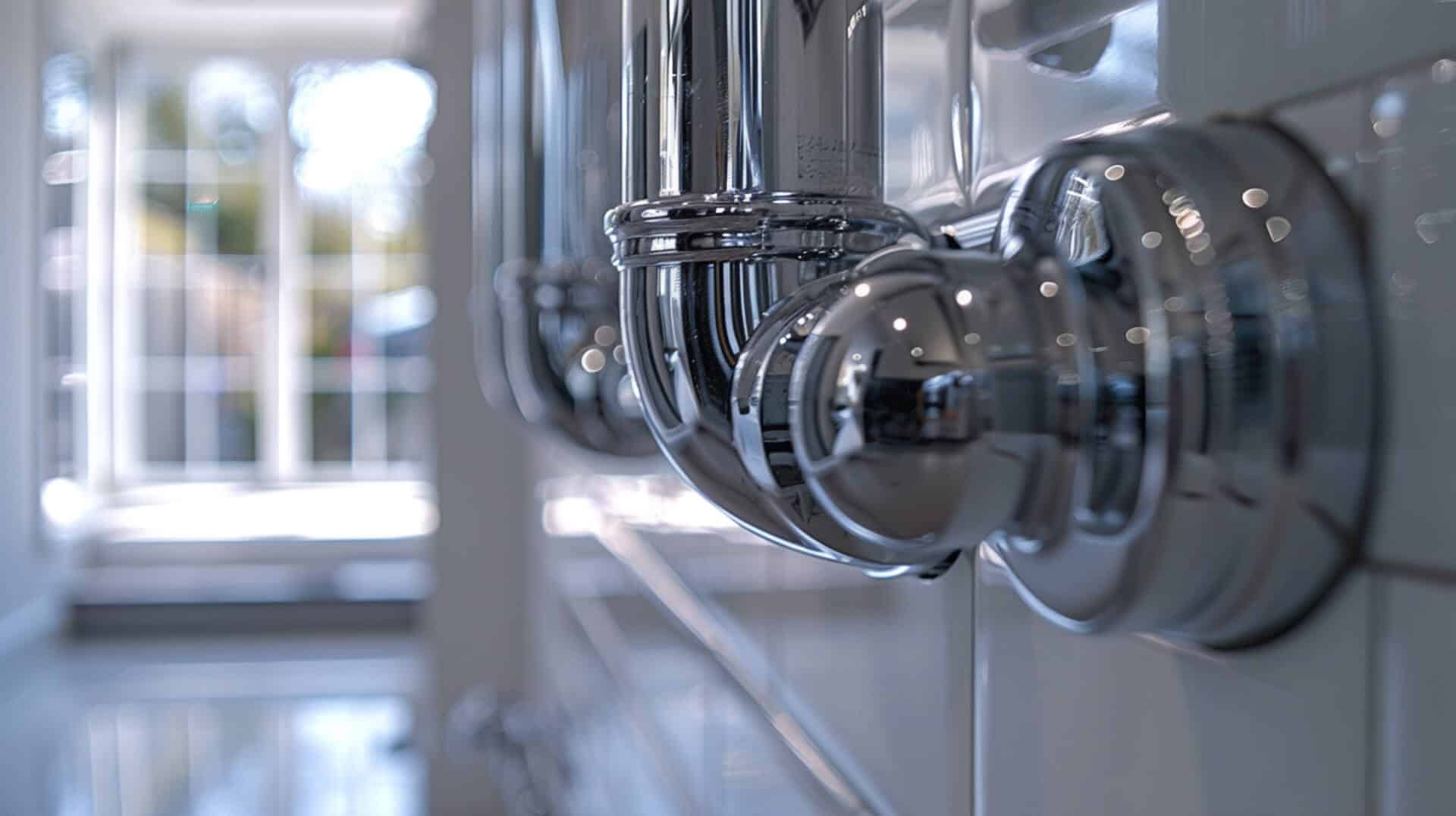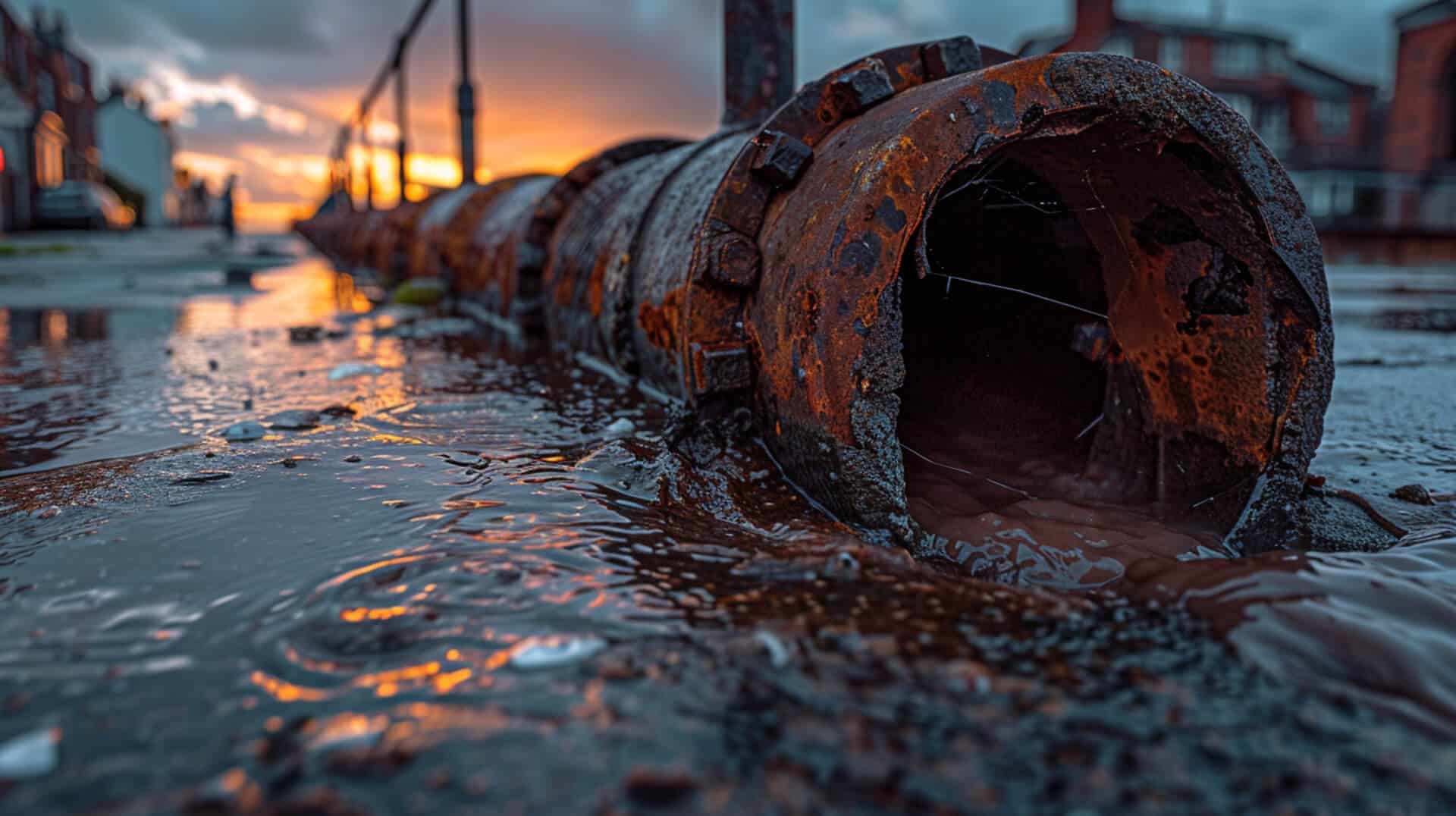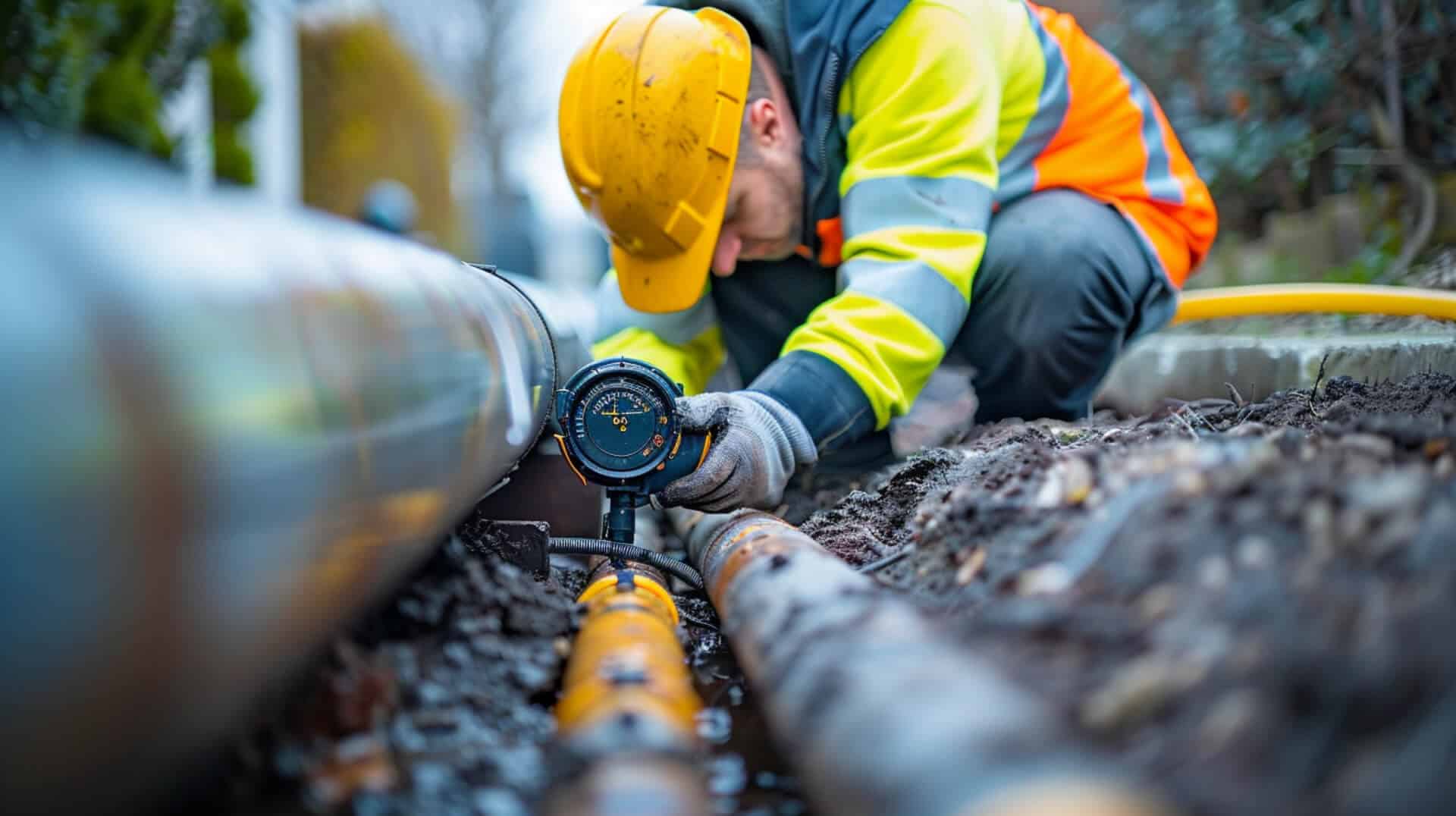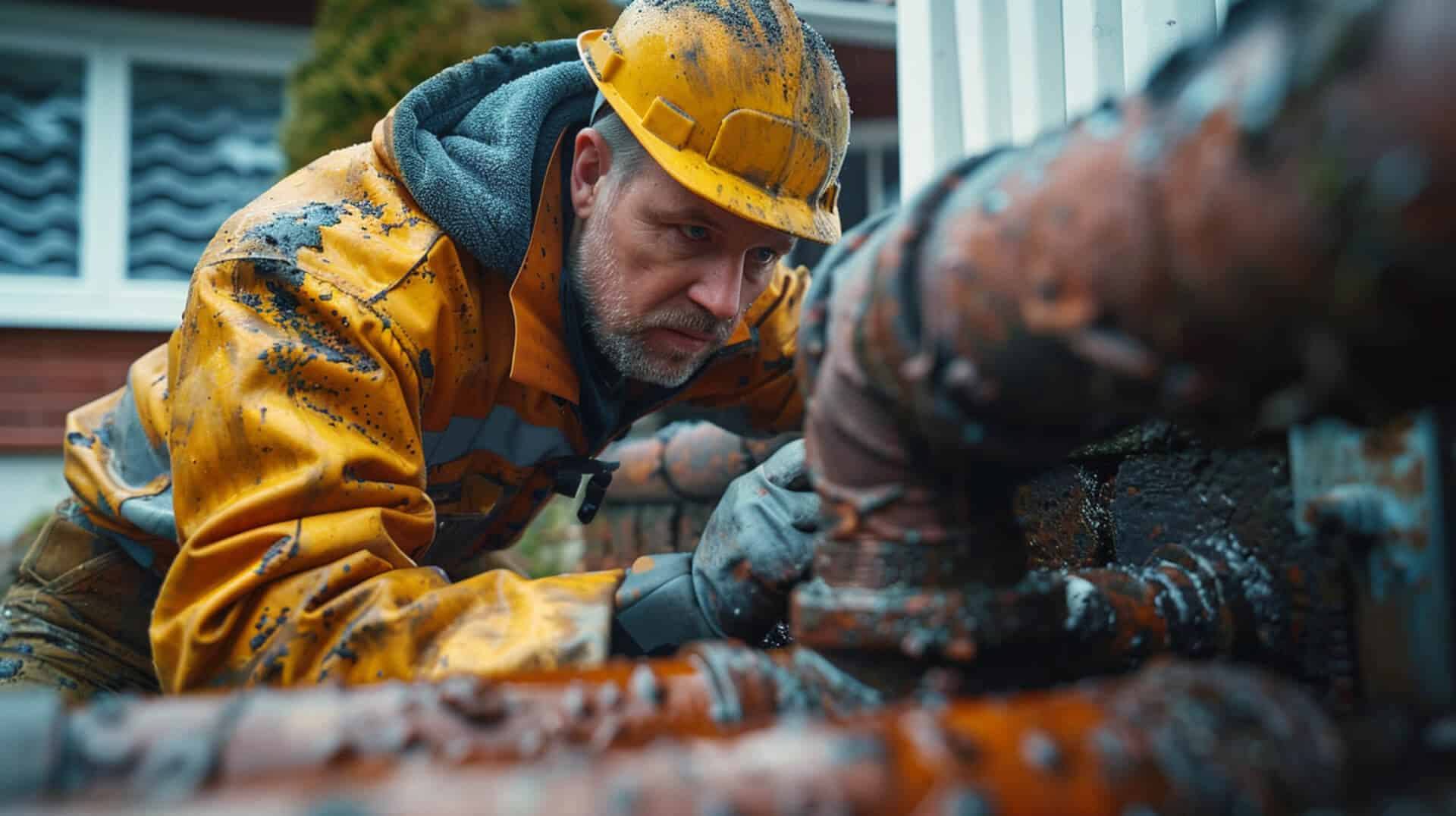 Why Is A Drain Pipe Corrosion Survey Important
Why Is A Drain Pipe Corrosion Survey Important
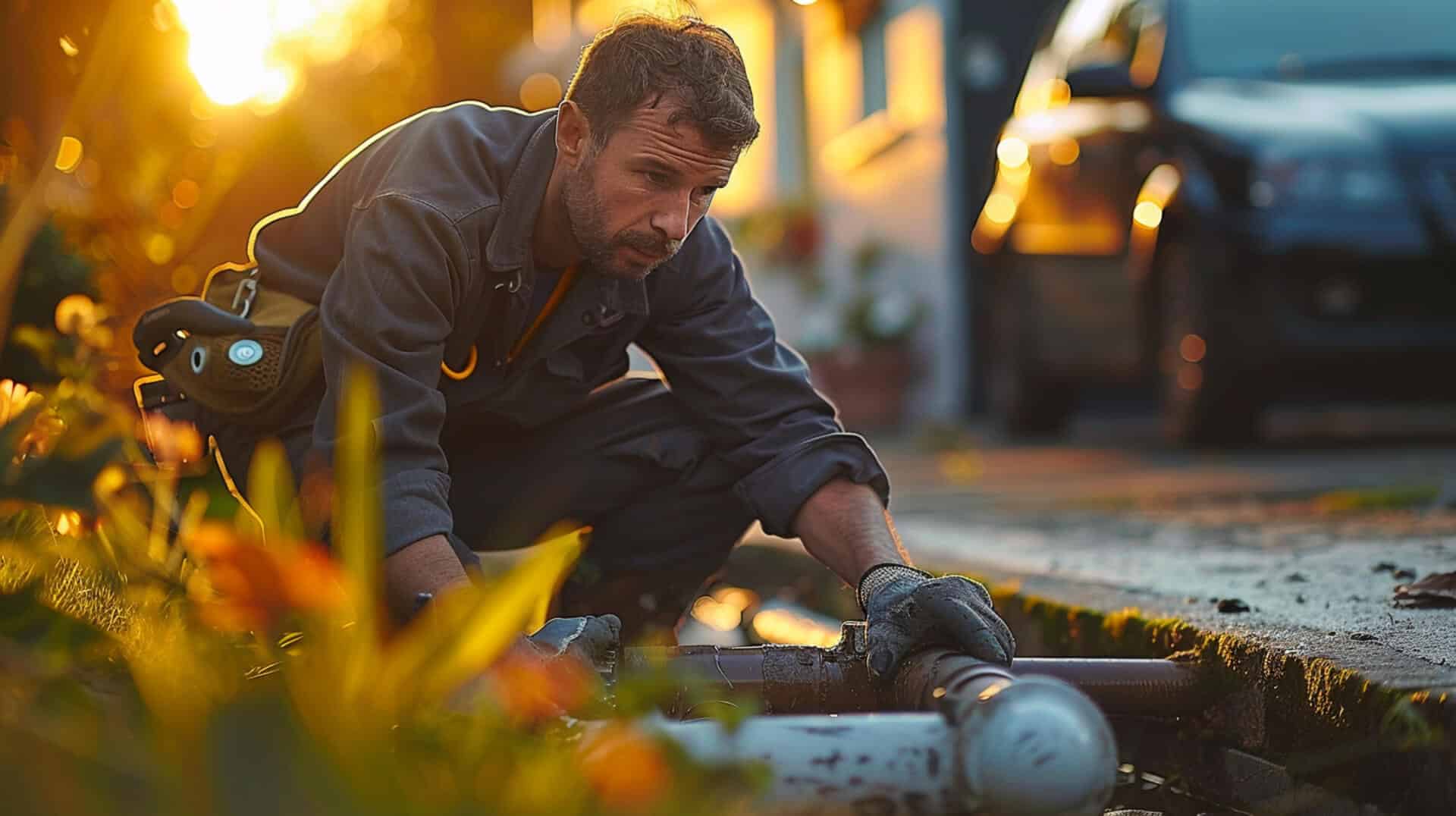
Drain pipe corrosion is a gradual deterioration of plumbing systems, often leading to leaks, blockages, and ultimately, system failure. Property owners should be vigilant about this issue as it can significantly impact infrastructure health and property value. Corrosion surveys serve as a preventive measure, identifying potential problems before they escalate into costly repairs.
Why Corrosion Surveys Are Crucial
Corrosion surveys contribute to infrastructure health by detecting early signs of pipe degradation. Utilising advanced technologies such as CCTV, sonar, and GPS mapping, these surveys provide a detailed assessment of a drainage system’s condition. Regular surveys can prevent severe damage, ensuring the longevity of the plumbing infrastructure and maintaining property value.
Long-Term Benefits for Property Value
Regular corrosion surveys can lead to substantial long-term benefits for property owners. By identifying and addressing issues early, property owners can avoid the steep costs associated with emergency repairs or full system replacements. Moreover, a well-maintained drainage system is a key factor in preserving and potentially increasing a property’s market value.
Guide Relevance for Stakeholders
This guide is tailored for property owners, business owners, and facility managers who are responsible for the upkeep of property infrastructure. It provides essential information on the importance of drain pipe corrosion surveys, helping stakeholders make informed decisions about maintenance and investments in their property’s plumbing systems.
Understanding the Causes of Drain Pipe Corrosion
Corrosion in drainage pipes is a multifaceted issue that can significantly impact the integrity of a property’s plumbing system. Recognising the factors that contribute to this deterioration is essential for maintaining the health of these systems.
Environmental Conditions Leading to Corrosion
Various environmental conditions can accelerate the corrosion process. These include:
- High humidity levels: Moisture in the air can condense on pipe surfaces, leading to rust.
- Temperature fluctuations: Repeated heating and cooling can cause pipes to expand and contract, weakening their structure over time.
- Soil composition: Certain soil types, especially those with high acidity or salinity, can corrode underground pipes.
Contribution of Waste Materials to Corrosion
Substances that commonly flow through drain pipes can also cause or exacerbate corrosion:
- Fats and oils: When disposed of in sinks, these can solidify and adhere to pipe walls, trapping moisture and chemicals that corrode metal.
- Debris: Accumulation of waste materials can create acidic conditions that eat away at pipe interiors.
Material Degradation and Its Effects
Over time, the materials that make up drainage pipes can degrade:
- Ageing pipes: Older pipes may not have the same corrosion-resistant properties as newer materials.
- Chemical reactions: Pipes can react with the chemicals in wastewater, leading to corrosion.
Early Identification and Cost Savings
Detecting these causes early through regular surveys can prevent costly repairs:
- Preventive maintenance: Identifying signs of corrosion early can lead to timely interventions, avoiding more significant issues.
- Long-term savings: Addressing corrosion promptly can prevent the need for extensive pipe replacement, saving on future costs.
By understanding these factors, property owners can take proactive steps to mitigate the risks of drain pipe corrosion.
The Role of Technology in Corrosion Surveys
Advancements in technology have significantly enhanced the accuracy and efficiency of drain pipe corrosion surveys. These technological tools not only provide a clear picture of the current state of the pipes but also help in planning effective maintenance strategies.
Specialised Equipment Used in Corrosion Surveys
Corrosion surveys employ a range of specialised equipment:
- CCTV Cameras: These cameras are inserted into the drainage system to provide a live feed of the pipe’s interior, allowing for real-time assessment.
- Sonar Devices: Sonar technology is used to detect and measure anomalies in pipe walls, which may indicate corrosion or blockages.
- Remote-Controlled Crawlers: These devices can navigate through pipes, carrying cameras and sensors to areas that are otherwise inaccessible.
Improving Survey Accuracy with Advanced Technologies
The use of these technologies leads to more accurate diagnostics:
- CCTV Inspection: Offers a visual confirmation of the pipe’s condition, capturing details that might be missed by the naked eye.
- Sonar Tracing: Provides a way to measure and map the interior of pipes, even when they are filled with water or debris.
GPS Mapping and Corrosion Extent
GPS mapping plays a crucial role in understanding the full scope of corrosion:
- Location Tracking: GPS technology helps in pinpointing the exact locations of faults within the pipe network.
- Mapping the System: By creating a detailed map, property owners can see the areas most affected by corrosion and plan targeted interventions.
These technologies collectively contribute to the precise identification of issues within drainage systems, guiding property owners in making informed decisions about maintenance and repairs.
The Process of Conducting a Drain Pipe Corrosion Survey
A drain pipe corrosion survey is a systematic process that involves several key steps to ensure the health of plumbing systems. Professionals utilise a combination of advanced technologies and expert analysis to diagnose and plan for the maintenance of drainage infrastructure.
Steps in a Comprehensive Corrosion Survey
The survey typically follows these steps:
- Preparation: Surveyors prepare the necessary equipment and review any pre-existing schematics of the drainage system.
- Visual Inspection: Using CCTV cameras, the interior of the pipes is visually inspected for signs of corrosion.
- Data Collection: Sonar and other sensing technologies collect data on pipe condition and integrity.
- Live Feed Analysis: Engineers analyse the live feed from the cameras and sensors to identify immediate concerns.
- GPS Mapping: The locations of detected issues are mapped with GPS for precise identification.
Role of Engineer Inspection
Engineers play a critical role in interpreting the data collected:
- They assess the severity of corrosion and other damages.
- Their expertise guides the decision-making process for necessary repairs or replacements.
Importance of Comprehensive Reporting
After the survey, a detailed report is provided:
- This report includes findings, recommendations, and imagery from the inspection.
- It serves as a crucial document for planning effective maintenance and ensuring the longevity of the drainage system.
By following these steps, property owners can gain a clear understanding of the condition of their drain pipes and take informed actions to address any issues.
Identifying and Addressing Common Issues Through Surveys
Drain pipe corrosion surveys are instrumental in pinpointing a variety of issues that, if left unchecked, can lead to significant infrastructure damage. Understanding these common problems is the first step in developing a robust maintenance strategy.
Common Issues Uncovered in Corrosion Surveys
Surveys often reveal:
- Blockages: Caused by the accumulation of debris, fats, oils, and other materials.
- Leaks: These may result from cracks or holes in the piping, often exacerbated by corrosion.
- Structural Damage: Corrosion can compromise the integrity of pipe walls, leading to collapses or deformities.
Preventive Maintenance Planning
Regular surveys inform preventive maintenance by:
- Identifying Early Signs: This allows for timely interventions before issues escalate.
- Scheduling Cleanings and Repairs: Based on survey findings, maintenance can be planned without disrupting daily operations.
Solutions for Detected Issues
Upon identifying issues, several remediation strategies are available:
- Cleaning: To remove blockages and restore flow efficiency.
- Pipe Re-lining: A minimally invasive solution to repair damaged sections.
- Excavation: For extensive damage, replacing sections of the pipeline may be necessary.
The Critical Role of Early Detection
Early detection through surveys is vital because:
- It prevents the escalation of minor issues into major system failures.
- It helps in budgeting for repairs and replacements in a more controlled manner.
By conducting regular corrosion surveys, property owners can ensure the longevity of their drainage systems and avoid the high costs associated with extensive damage repair.
The Importance of Professional Qualifications in Survey Conduct
When considering a drain pipe corrosion survey, the qualifications of the surveyor are paramount. A surveyor’s expertise directly influences the accuracy of the survey and the quality of the recommendations provided.
Essential Qualifications for a Professional Surveyor
A qualified professional surveyor should have:
- Certification: Recognised credentials in the field of plumbing or civil engineering.
- Experience: A track record of conducting similar surveys with verifiable references.
The Role of NADC Accreditation
The National Association of Drainage Contractors (NADC) accreditation serves as a benchmark for quality in the industry:
- Assurance of Standards: NADC accreditation signifies adherence to industry best practices.
- Professional Training: It indicates that the surveyor has undergone specialised training relevant to corrosion surveys.
Impact of Specialised Training on Survey Quality
Specialised training equips surveyors with:
- Up-to-date Knowledge: Awareness of the latest techniques and technologies in corrosion detection.
- Skill Enhancement: The ability to interpret data accurately and provide reliable solutions.
Risks of Underqualified Survey Conduct
Choosing an underqualified individual to conduct a survey can lead to:
- Inaccurate Assessments: Misdiagnosis of the system’s condition, leading to inappropriate interventions.
- Increased Costs: Potential for unnecessary repairs or missed issues that could result in more significant damage and expenses.
For these reasons, ensuring that your surveyor has the appropriate qualifications and accreditations is crucial for a thorough and effective corrosion survey.
Legal and Regulatory Considerations in Drain Surveys
Conducting a drain pipe corrosion survey is not only a matter of maintaining infrastructure but also of adhering to legal and regulatory standards. These surveys are integral to ensuring compliance with various regulations that govern building and environmental safety.
Compliance with Building Regulations
Corrosion surveys address several compliance issues:
- Building Regulations Approved Document H: Surveys ensure that drainage systems meet the requirements set out for waste disposal systems, including sewers and septic tanks.
- Local Building Codes: They verify that the structural integrity of the drainage system is up to code, preventing potential legal issues related to non-compliance.
Importance of Adhering to Local Regulations
For property owners, compliance with local regulations is crucial:
- Legal Obligations: Owners are legally required to maintain their drainage systems in good working order.
- Environmental Stewardship: Regulations often include measures to protect the environment, which surveys help to uphold.
Potential Legal Implications of Survey Neglect
Neglecting to conduct regular corrosion surveys can lead to significant legal consequences:
- Liability: Owners may be held liable for any damages or environmental contamination resulting from neglected pipe maintenance.
- Penalties: Failing to comply with regulations can result in fines or other penalties from local authorities.
By staying informed and proactive with corrosion surveys, property owners can ensure they meet their legal obligations and maintain the safety and integrity of their properties.
Financial Implications of Drain Pipe Corrosion Surveys
Evaluating the costs and benefits of drain pipe corrosion surveys is essential for property owners to understand the financial impact and the value these surveys provide.
Cost Comparison and Potential Savings
The cost of a corrosion survey may vary, but the potential savings are substantial:
- Preventive Measures: Surveys can detect issues early, preventing costly emergency repairs.
- Long-term Savings: Regular maintenance based on survey results can extend the life of the drainage system, reducing the need for expensive replacements.
Factors Influencing Survey Costs
Several factors affect the cost of conducting a corrosion survey:
- Property Size: Larger properties may have more extensive drainage systems, increasing the survey’s scope.
- Location: Accessibility and geographical location can impact the cost of the survey.
- Survey Depth: The level of detail required in the survey report can also influence the price.
Long-Term Cost-Effectiveness
Investing in corrosion surveys is considered cost-effective because:
- Asset Preservation: Maintaining the integrity of the drainage system preserves the property’s value.
- Regulatory Compliance: Surveys ensure compliance with local regulations, avoiding fines.
Budgeting for Regular Surveys
Property owners can budget for regular surveys by:
- Planning: Incorporating survey costs into the property’s maintenance budget.
- Frequency: Determining the appropriate frequency of surveys based on the property’s age and condition.
By understanding these financial aspects, you can make informed decisions about the maintenance and care of your property’s drainage system.
Strategies for Maintenance and Prevention Post-Survey
Following a drain pipe corrosion survey, implementing a maintenance strategy is crucial to prevent future issues and maintain the health of your drainage system.
Recommended Maintenance Strategies
Post-survey, it is advisable to:
- Schedule Regular Cleanings: To prevent blockages that can accelerate corrosion.
- Monitor for Changes: Keep an eye on the system’s performance to catch new issues early.
Implementing Corrosion Controls
Effective corrosion controls include:
- Material Upgrades: Replace pipes with corrosion-resistant materials where necessary.
- Chemical Treatments: Use inhibitors to slow down the corrosion process.
The Necessity of Regular Inspections
Regular inspections are vital because they:
- Identify Problems Early: Allowing for less invasive and more cost-effective solutions.
- Extend System Life: By preventing the progression of minor issues into major system failures.
Role of Quality Materials in Corrosion Prevention
Using quality materials is essential as they:
- Resist Corrosive Substances: Higher quality materials can withstand harsher substances that flow through the pipes.
- Offer Longevity: They tend to last longer, reducing the need for frequent replacements.
By adhering to these strategies, you can ensure the durability and reliability of your property’s drainage system, safeguarding against the costly implications of corrosion.
Recognising Symptoms and Triggers for a Corrosion Survey
Identifying the early signs of drain pipe corrosion is critical for maintaining the health of your property’s plumbing system. Awareness of these symptoms can prompt timely surveys, preventing costly repairs.
Indicators of Potential Corrosion
Several symptoms suggest the need for a corrosion survey:
- Slow Drainage: A noticeable decrease in water flow rate can indicate blockages or pipe narrowing due to corrosion.
- Unusual Odours: Persistent bad smells may be a sign of corroded pipes affecting waste flow.
- Discoloration of Water: Any change in water colour, especially a brownish tint, could suggest rust and corrosion in the pipes.
Corrosion Surveys for New Property Purchases
For new property acquisitions, a corrosion survey is advisable:
- Assessment of Existing Conditions: It provides a clear picture of the plumbing system’s state before purchase.
- Negotiation Tool: Survey results can be used in price negotiations to account for any necessary repairs.
Cost-Saving Benefits of Early Detection
Recognising these triggers for a survey can lead to significant savings:
- Preventive Action: Early intervention can mitigate the need for more extensive, expensive repairs.
- Long-Term Planning: Survey findings can inform long-term maintenance budgets and schedules.
By staying vigilant for these signs, you can ensure the longevity of your drainage system and avoid the disruptions and expenses associated with advanced corrosion.
The Environmental and Safety Benefits of Regular Surveys
Regular drain pipe corrosion surveys play a significant role in environmental conservation and public safety. By detecting and addressing corrosion early, these surveys contribute to the overall well-being of the community.
Contribution to Environmental Protection
Corrosion surveys are beneficial for the environment in several ways:
- Preventing Leaks: They help detect pipe weaknesses before they lead to leaks, which can contaminate soil and water sources.
- Minimising Pollutant Release: By ensuring the integrity of the drainage system, surveys prevent the release of harmful pollutants into the environment.
Ensuring Water Quality
Maintaining water quality is a critical aspect of environmental safety:
- Protecting Waterways: Surveys help avoid the contamination of local waterways, preserving the ecosystem.
- Safe Drinking Water: They also ensure that water treatment facilities receive uncontaminated water, safeguarding public health.
Mitigating Safety Concerns
Regular surveying addresses several safety concerns:
- Preventing Property Damage: Early detection of corrosion can prevent pipe bursts that may lead to property damage and safety hazards.
- Avoiding Health Risks: By keeping the drainage system in good condition, surveys reduce the risk of health issues associated with exposure to sewage.
Alignment with Sustainable Practices
Corrosion surveys align with sustainable property management by:
- Promoting Longevity: They extend the life of the plumbing infrastructure, reducing the need for resource-intensive repairs and replacements.
- Supporting Green Initiatives: Surveys are part of a proactive approach to property management that prioritises environmental stewardship.
By incorporating regular corrosion surveys into maintenance routines, property owners can ensure they are contributing positively to environmental sustainability and public safety.
The Indispensable Role of Corrosion Surveys in Property Management
Drain pipe corrosion surveys are a critical component of property management, serving as a proactive measure to safeguard infrastructure.
Ensuring System Longevity and Integrity
Regular surveys help in:
- Detecting Early Signs: Identifying potential issues before they escalate into costly repairs.
- Planning Maintenance: Informing property owners about the necessary steps to maintain the health of their drainage systems.
Providing Peace of Mind
For property owners and managers, these surveys offer:
- Confidence: In the reliability of their drainage systems.
- Security: Knowing that they are taking the necessary steps to prevent unexpected failures.
Long-Term Benefits of Maintenance Integration
Incorporating surveys into maintenance plans yields long-term advantages:
- Cost Efficiency: Reducing the likelihood of emergency repairs and replacements.
- Property Value Preservation: Maintaining the overall health of the property’s infrastructure.
Empowering Informed Decision-Making
This guide equips property owners with knowledge to:
- Understand the Importance: Of regular corrosion surveys.
- Make Informed Choices: Regarding the care and maintenance of their drainage systems.
By recognising the importance of drain pipe corrosion surveys, property owners can ensure the longevity and efficiency of their plumbing systems, contributing to the overall well-being of their properties.
